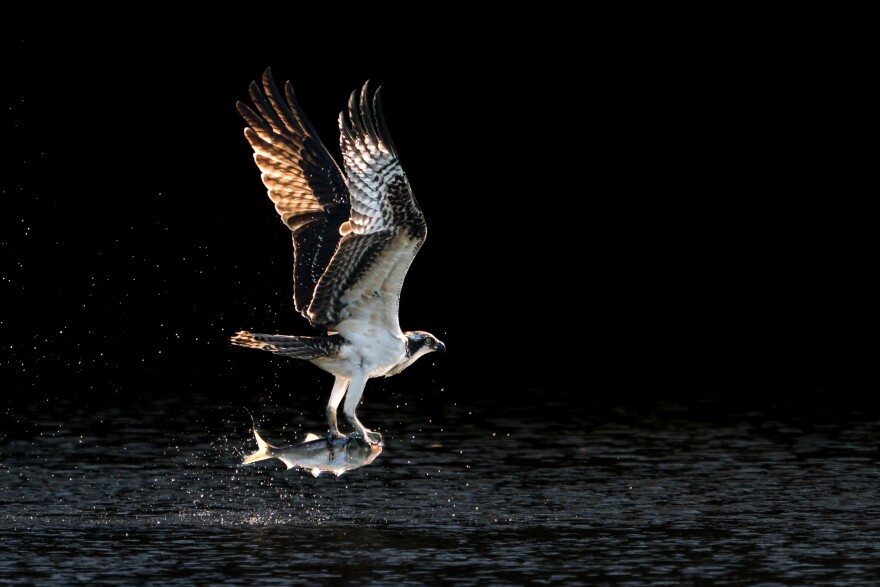The day I went out to snap pictures of Ospreys on the Bitterroot River was a day I’ll never forget. The river was running at flood stage after weeks of late spring rain, creating a challenge even for a bird with superpowers.
At Lee Metcalf National Wildlife Refuge, I saw an Osprey dive into the deepest section of white water and emerge with nothing to show for its effort, and then retreat to a cottonwood branch to watch for another opportunity in the dark, boiling water.
Breathlessly anticipating a second dive attempt, I stabilized my camera by placing my knee on the riverbank. That was when the earth beneath me collapsed, and I somersaulted into the fast-moving, cold water. Time stopped when I found myself getting carried away by the swollen river. But my survival instinct went into autopilot, and I grabbed a downed tree branch and pulled myself ashore, holding my water-logged camera in hand. I was in shock and humbled, but very grateful to be alive.
Why did I take such a risk? The answer goes back to many decades of fishing trips, sharing trout water with Ospreys. Anglers can only wish for the success rate of Ospreys when fishing. Recent studies confirmed that Ospreys come up with a fish in their talons in one out of four attempts. The average hunt time before making a kill is about 12 minutes—something to think about next time you throw your fishing line into the water.
Ospreys can completely submerge underwater and still fly away with their prey. Other fish-eating raptors can only pluck fish from the surface of the water. Like other birds, Ospreys have upper and lower eyelids, one to protect them from dust and the wind in flight and one for sleep. But Ospreys also have a third eyelid that protects their eyes when diving into water. The third eyelid (called a nictitating membrane) is semi-transparent and functions like a pair of goggles.
Superpowers aside, life has not always been easy for Ospreys, and they continue to be at risk. In the 1960s, their numbers were devastated across the country by DDT and other pesticides and herbicides. Close to home on the Clark Fork River, studies are underway to help us understand the impact of heavy metals on Ospreys from upstream mining. Light snowpack years mean lower flows and warmer temps, resulting in tougher fishing for Ospreys.
The menu for Ospreys is very consistent. They live almost exclusively on fish, with only an occasional small rodent. This selective dining provides benefits but also disadvantages. Ospreys have evolved to be very good at what they do as “fish hawks,” but the fish they thrive on are often contaminated.
In 2021, the Associated Press reported the number of active nests from Deer Lodge to Missoula dropped by about 65 percent over 10 years. Researchers also reported that the average Upper Clark Fork Osprey chick’s blood mercury level was about 100 times higher than what is considered problematic in humans.
In the same way that Peregrine Falcons, Bald Eagles, Golden Eagles, and other raptors bounced back after decades of DDT use, Osprey populations have improved since the 60s throughout North America, and there is hope for their future near Missoula. Citizen scientists are playing a key role, erecting nesting platforms to compensate for loss of habitat. Volunteers are also closely observing and monitoring Osprey nests and passing that data on to scientists and researchers.
More than a decade ago, our family lived along the Clark Fork River near Huson. On most days we sat on our patio and watched Ospreys fishing from dawn to dusk, and we marveled at their fishing prowess and persistence to keep their families fed. It was not an easy life for our favorite fishing birds. They were forced to share their fishing waters with Bald Eagles, a much bigger raptor that often steals Osprey catches rather than find their own dinners.
Ospreys are admirable creatures. They work hard for their survival despite the many challenges they face. If you take the time to sit back and closely watch Ospreys, you will be mesmerized. Just remember to stay away from eroded river banks at high water.





